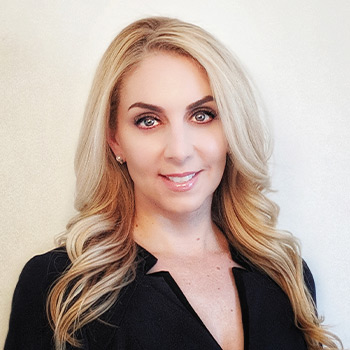Follow
About Nancy
Nancy Davis is the founder and managing partner of Quadratic Capital Management, which she founded in 2013. Ms. Davis began her career at Goldman Sachs where she spent nearly 10 years, the last seven with the proprietary trading group where she rose to become the head of credit, derivatives, and OTC trading. She has been the recipient of numerous industry recognitions. Ms. Davis was named by Barron's as one of the "100 Most Influential Women in US Finance" and Institutional Investor called her a "Rising Star of Hedge Funds." The Hedge Fund Journal tapped her as one of "Tomorrow's Titans."
Nancy's Videos
It’s impossible to know for sure whether the path of interest rates and longer-duration bonds holds more sensitivity to interest rates. Dive into an interactive discussion about the two factors to weigh when evaluating fixed income: (1) spread risk and (2) rate risk (aka duration).
Since the last FOMC meeting, the data has been really mixed. GDP ( 2.1% vs. 2.2% expected) and personal consumption ( 0.8% vs. 1.7% expected) both came in below expectations and hotter inflation prints. The bond market is painfully adjusting to the new “higher for longer” regime. The Fed’s QE program kept yields artificially suppressed for way too long. Now that we have QT (or at least the Fed not doing QE), the US yield curve is the most important piece of pricing information in the world
In the last 18 months, the world has turned upside down. Interest rates and oil prices are up, stock prices are on a roller coaster and mortgage rates are through the roof. A long-awaited recession has yet to occur. In this highly uncertain world, two experts offer their insights into how advisors should allocate clients assets.
CFP Board Pending/1 Hour I&WI CE Credits
While realized inflation is near record highs, future inflation expectations are subdued, and future inflation expectations are benign. A key risk is an increase in inflation expectations could bring back nightmares from 2022 when both bonds and equities declined together hurting all portfolios. Investors should be wary of inflation expectations rising above the Federal Reserve's 2% target. Following the economic devastation that the Financial Crisis wrought, central banks throughout the world engaged in massive and unprecedented programs of quantitative easing. When these quantitative easing (or so-called money printing programs) began, a small but vocal minority of economists and investors predicted that the consequences of such programs would be high levels of inflation, essentially arguing that the cure would be worse than the disease. Up until COVID, most of those envisaging inflation were faced with evidence to the contrary. Post COVID, realized inflation has been surging but consensus remains that inflation has peaked. The US yield curve has inverted, bringing the 2s10s spread to its lowest level in the history of derivative markets, even lower than the 1980s levels. In this session we will discuss what has been learned from the current inflation shock and what we can do differently in the future to have more diversified portfolios.





